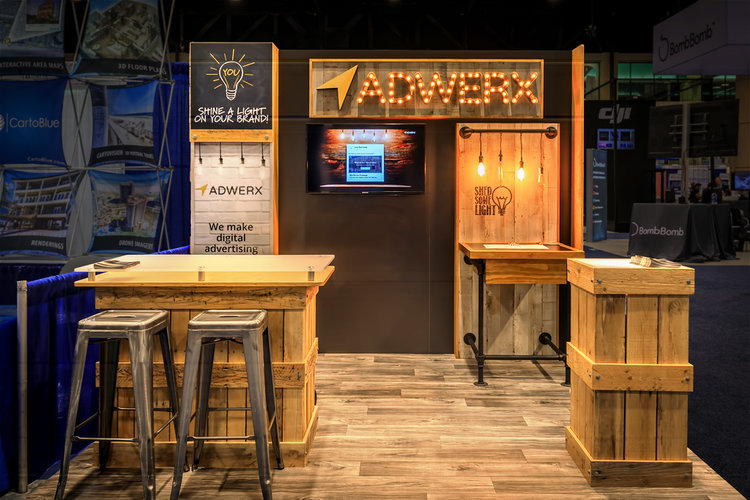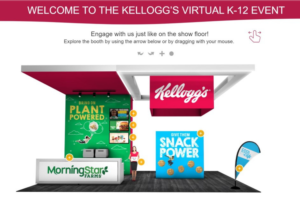The decision to attend a trade show is not one your company takes lightly. It’s an investment (and a worthwhile one, at that) and therefore the pressure is on to make the most of your allotted budget. There are many considerations, from ensuring you have a timeline in place to choosing the best trade show hall location. While these and many other elements like booth design are crucial to a successful trade show program that meets each of your goals, we believe choosing the best shows for your brand is another key consideration and one that you should evaluate on a regular basis.
In many cases, trade shows are held the same time each year. In others, two shows might be held on a seasonal basis or even on a domestic and international basis. We have clients who attend shows that are only held once every two years, making their presence at that trade show a high stakes situation. In the case of an industry show held every two years, the choice to exhibit is quite cut and dry, but still others present a choice that could make or break your program.
STEP ONE: ANALYSIS
The first step to making a trade show decision is to gather information about your industry, markets, and where your product and offerings fit in order to make an educated decision. This knowledge is helpful, but it pales in comparison to the learning you will gain from speaking with your internal marketing, sales, and product management teams. This will not only give you a better understanding of internal goals, but also of the target markets for sales and marketing.
When speaking to these groups, keep in mind the information you are trying to gather while also using open ended questions to allow your team to educate you on their knowledge and thought process. For example, sales is out there in the trenches, shaking hands and really getting the pulse of not only the industry but what your clients are seeking in the marketplace. However, product or vertical marketing managers know the market really well and can be relied upon for the bulk of the data you require.
STEP TWO: RESEARCH
The best way to understand what customers and prospects need is to simply ask them! While this seems like an obvious step, it’s one that cannot be skipped when researching potential trade shows for your company. There is some key information that you want to gather from clients and prospects during this phase, including:
Typical show attendance
Shows they consider important
An overall interest in your product or similar products
Of all this information, understanding the overall industry awareness of your company is among the most important. This awareness will help you to understand expected booth traffic if you were to attend a show so you can closely align your goals across departments. If they aren’t aware of your company, no problem: think of the trade show as a way to make a mark on prospects by making a good first impression.
STEP THREE: UNDERSTANDING YOUR OPTIONS
While some industries may be cut and dry from a show perspective, with only one major show held per year, many others offer a myriad of options. If a show is offered in the spring and the winter, should you pick a season or attend both? Have you identified your buyer personas and if so, what does this information tell you about their behavior in regards to trade show attendance? If so, it is important to make sure the right roles (personas) are attending the show. Just because a show covers a particular industry it might attract a role that you are not trying to reach. Examine prior year attendee lists to see the actual titles and companies attending.
By researching your options, you can begin to develop a plan. At Exhibit Concepts, we believe strongly in using a program approach for trade shows. Start well before the busy season and create a plan of attack that aligns with your goals. Understand more about typical attendance, the number of exhibitors and competitors present, and your company’s potential investment. Most shows have an educational component; is this something that resonates with your clients and prospects? Think about how your presence or sponsorship of that aspect of the show can provide a benefit- or if your money is best spent elsewhere in the exhibit hall.
STEP FOUR: TIME TO DECIDE
You’ve done all your research and thoroughly analyzed the results. Now is the time to make that critical decision about show selection. Use your data to make an educated decisions based on your findings and also trust your gut when it comes to a path. Organizing information in a spreadsheet can help you easily compare shows and even a meaningful conversation with your exhibit house can expedite a wise choice.
Once the decision is made, use your findings to help you establish goals in regards to leads, traffic, and other measurables that will be useful in presenting information to management about the success of the selected shows.
After you return from a show and it’s fresh in your mind, take your team through a Start, Stop, Continue Exercise to really dig into the performance of the show. You’ll gain valuable insights to help you chart the path for the next show.











